The year that Spain had to leave the hugs behind
The script for 2020 was turned on its head due to a virus that silently spread across the world. From the first coronavirus case identified in the country on January 31, to the administration of the first vaccine in December, this is how Spaniards lived through the year of Covid-19


The new year starts on January 1, but in Spain, with its long and unusual Christmas holidays, it doesn’t really get going until January 7, once the Three Kings have departed. On January 7, 2020, the lower house of parliament, the Congress of Deputies, swore in Pedro Sánchez as prime minister. That same day, in China, scientists discovered what was causing strange cases of pneumonia in the province of Hubei: a virus similar to the one that caused SARS, a disease that rocked a number of Asian countries in 2003 and disappeared several months later. The script for 2020 changed forever. Back then, no one could have imagined what was soon to arrive: from the biggest pandemic the world has seen in generations, to a vaccine created in record time to eradicate it. It’s been a year of masks, lockdowns, social distancing, PCR tests and curve-flattening. A year when we could no longer hug one another.
January. A far-off threat
On January 7 no one outside specialist circles was paying much attention to the virus. While it would emerge later that China was hiding evidence that it could be transmitted from person to person, at the time it was thought that it could only move from animals to people. The wet market in Wuhan was closed as a likely source of the outbreak, and from then on, it was thought that there would be no further problems. Several days after the genetic code of the virus was sequenced, it was made public so that other countries could prepare PCR tests to identify it. China, on paper, was being swift and transparent, in contrast to its approach to SARS, when its secrecy delayed a solution to the problem for months.
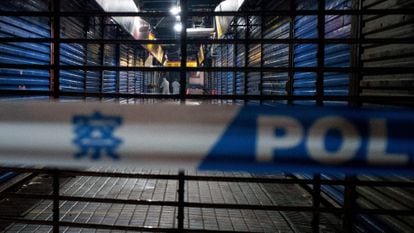
Everything changed on January 20. And from then on events took place at a vertiginous speed. On that day, China admitted that the virus could be passed from human to human. That turned the strategy for dealing with it upside down. The country was still only officially recognizing 300 cases and six deaths, but the potential for the damage it could cause was now being looked at in a different light – in particular within the borders of the Asian giant. Practically no one at that point was considering the possibility of a pandemic. Three days later, China locked down the city of Wuhan. The virus became front-page news in all newspapers, and – apart from a few moments of respite – would stay there until now.
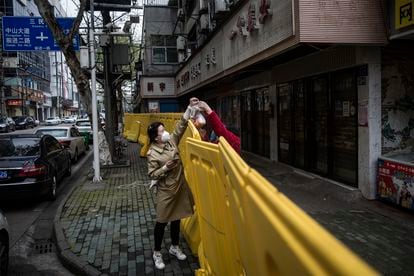
Millions of people were locked in their homes, unable to leave their city. The world looked on incredulous at what was happening. “This would be unthinkable in a democratic country,” analysts said over and over again. While the World Health Organization (WHO) was debating whether or not to declare an international emergency, something it had only done on five occasions in the 20th century, in Spain the news began to spark interest given that 23 Spaniards who lived in Wuhan were trying to return to their home country. On January 24, Fernando Simón, the director of the Health Ministry’s Coordination Center for Health Alerts (CCAES), made his first statement. He was not a completely unknown figure, given that he was the spokesperson during the 2014 ebola crisis in Spain, but practically no one remembered him.
Almost casually, Simón announced that there had been two suspected cases that were being analyzed. But that tests had come back negative and that Spain would be vigilant for the virus. On January 30, the WHO declared an international emergency and on January 31 Spain’s National Microbiology Center in Majadahonda detected the first positive case. It was a German citizen who was on vacation in the Canary Island of La Gomera. That day, Simón uttered a phrase that will likely follow him around for the rest of his life: “Spain will not have, at the most, more than a few cases diagnosed.”
February. The virus spreads across the world
Silently, the virus was already spreading throughout the globe. While there was only a handful of infections outside of China, later it would emerge that the coronavirus was preparing the ground to explode and become a pandemic, something that the WHO did not recognize until March 11.

February was the month that the Mobile World Congress in Barcelona was canceled, despite the indignation of local administrations and the surprise of the majority of epidemiologists. It was also the month when the virus ripped through Italy. The epidemic was no longer thousands of kilometers away, but rather just hundreds. But in Spain it still felt very far away. “This couldn’t happen to us,” many citizens thought, backed by a government that was trying to convey a sense of calm and that delayed a number of decisions because the virus was, in theory anyway, under control.
But you can’t detect something if you’re not looking for it. Spain had a very limited capacity to carry out tests, meaning that the definition of a case was still very restricted. It was a fish that was eating its own tail – more tests could not be carried out, without more tests more cases could not be detected, and without more cases there was supposedly no need to take drastic measures.

March. The state of alarm
March began with a steady stream of cases, all of them apparently under control. The turning point came on March 8. The central government had opted not to cancel large events, and sports matches, political rallies and demonstrations continued as if nothing had changed. While the 8-M feminist marches – which were attended by many high-profile politicians from the Socialist Party (PSOE)-Unidas Podemos coalition government – were the focus of much media attention and criticism afterward, they were just one of the events that went ahead that weekend. And, given what we now know about how the virus is transmitted, they were not exactly the most dangerous.

But what changed on that day had little to do with these crowds. On the same afternoon, the CCAES received a report from the Madrid region – in Spain, each of the regional governments is in charge of its own healthcare system. That week, the region reported, the number of positive cases had been rising at a steady rate, and on that very Sunday, 234 had been confirmed in a single day. This information was not made public until the next day, and it was the first thing that prompted the central Health Ministry to suspect that the epidemic was out of control.
The health minister, Salvador Illa, made a statement the next day to recommend that citizens did not make unnecessary journeys. And the Madrid region opted to suspend classes in schools and universities. The CCAES did not see the point in this latter measure, given that it would prompt the movement around the country of students and teachers, and would count for little without suspending the rest of the country’s activity.
Preparations began for a decree that would be approved by the Cabinet on March 14, 24 hours after the prime minister made a televised address announcing that a state of alarm was imminent. By that point, the atmosphere in the Spanish capital was already strange. Children weren’t going to school and a lot of companies had already introduced working from home.
On March 14, a state of alarm that would last 98 days began, seeing most of the country’s population confined to their homes for around two months. That night also saw the first round of applause for healthcare workers, a nightly practice that would last for even longer.
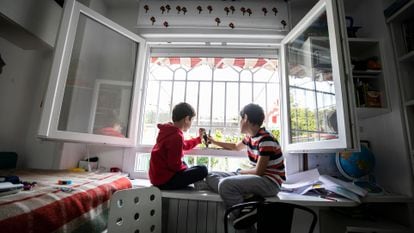
But the lockdown was insufficient. The country’s hospitals were already close to being overwhelmed and if more drastic measures were not taken the tragedy would be even greater. That was what prompted Pedro Sánchez, advised by a group of scientists, to hibernate the economy completely, and allow only essential activity to continue. This phase began on March 29, and lasted for 15 days. The last day of that month, Spain saw the highest number of infections reported in this first wave: 9,222, a completely unreal number not just due to the delay in notifications from hospitals but also because around that time it has been estimated that only one in 10 infections were being officially recorded. But it was symbolic: this was the day that the curve was flattened. Two weeks of confinement had done their job, but there was a long road still ahead.
April. Hospitals and senior homes overwhelmed
While new cases had reached their peak and deaths would do so shortly after (950 Covid-related fatalities were reported on April 2), the distress in hospitals and care homes would still continue for weeks. There was a lack of personal protective equipment (PPE), staff, beds and respirators. The state of alarm had arrived in time for most of the regions, and they were able to attend to everyone who needed it. But this was not the case in Madrid, Catalonia, the Basque Country and some cities in Castilla-La Mancha and Castilla y León.
In these locations triage was necessary in order to deal with the sickest patients, and thousands of seniors, in particular in Madrid, were left abandoned to their fate in residences. It was still difficult to conceive the painful toll that the virus would take in senior homes, which were one of the main focal points of the crisis and uncovered structural problems in the system.
Up to mid-November, more than 24,500 died in social services residences (including homes for the disabled) with either confirmed Covid or compatible symptoms. In the first wave, many of these victims did not receive the medical attention they needed, and were unable to say goodbye to their relatives. What’s more, their carers were ever fewer as they also came down with the illness.

This was also the month of one of the symbols of the pandemic: face masks. Until then, international organizations did not consider them to be essential, partly because at that point the virus was unknown and also, to a great extent, demand for the items was having a drastic effect on supply.
Given the possibility that healthcare workers would run out of masks (something that happened), the authorities opted not to recommend their use. But on April 8 the European Center for Disease Control (ECDC) admitted that they could be useful to prevent infections. Two days later, Health Minister Illa recommended their use on public transport and in the workplace, a measure that would soon become obligatory in all public places.

But while the situation was extreme in hospitals in the month of April, there were also the first rays of hope on the horizon. The lockdown in Spain was one of the toughest in the Western world and was starting to take its toll. There were widespread calls for, at least, children to be allowed out after six weeks inside, something that was permitted from April 26. Youngsters could go out for an hour a day, accompanied by an adult, and only a kilometer away from their home. The deescalation process had got off to a timid start.
May. The deescalation
The Spanish government managed to secure the support it needed from other parties to prolong the state of alarm on a fortnightly basis, but it was becoming more and more difficult to do so. A team of advisors was working on the deescalation plan, which was being designed to get the country back to some kind of normality – or the new normality, as the prime minister would describe it. It was to be an asymmetrical and progressive plan that each region would implement according to the epidemiological situation and the pressure on local hospitals. Phase 1 of the plan would begin on May 11 apart from for four of the country’s islands: Formentera, El Hierro, La Gomera and La Graciosa. With no cases reported for some days, they turned into a testing ground a week beforehand.
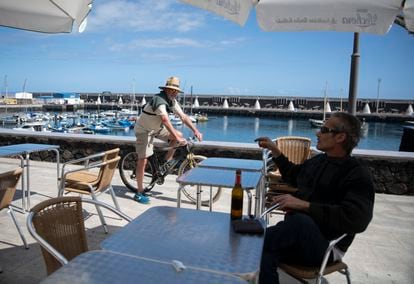
With the deescalation process, conflict between some regional governments and the central administration broke out. Until then there had been differences and some tugs-of-war, in particular involving the Madrid region. But these were pushed aside due to the severity of the situation. When the worst was over, however, these differences became more and more evident.
Despite reports from her own health department that advised against it, the Popular Party premier of Madrid, Isabel Díaz Ayuso, flew up a flag that she still carries to this day, touting Madrid as a symbol of “freedom” in the face of the government’s restrictions, which she considered to be excessive. As the coronavirus data continued to improve, more and more regional governments called for the state of alarm to be lifted so that they could regain their powers and manage the situation for themselves.
June. The end of the state of alarm
While the deescalation was designed to end at the beginning of July, the lack of support and pressure from opposition parties and regions prompted the government to bring it to an end on June 22. That was the end of the state of alarm and a chance for the regions to take a step toward the new normality. Some restrictions remained in place, but there was a general relaxation when Spain registered eight cases per 100,000 inhabitants over thee previous 14 days, the lowest figure seen since the start of the crisis and one that has not been seen since then – by a long, long way.
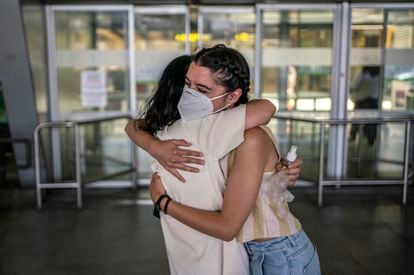
July. The start of the second wave
As the measures were relaxed, so the cases began to rise. The second wave started to take shape, very slowly. At this point, as at the start of the pandemic, there was a trickle of cases being detected. The seed was planted among seasonal workers in Aragón, which became the first region that had to reverse the deescalation process, and then it was the turn of Catalonia. From that point all of the regions started to react to the rise in cases with tightened measures.
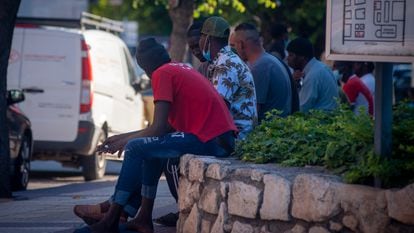
August. Nightlife is canceled
It seemed impossible to believe, but the situation began to get out of control once more. Without enough capacity for tracking and tracing, Spain was leading a second wave that was yet to arrive in other European countries. The focus was on youngsters and nightlife, prompting the Health Ministry and the regions to approve a raft of measures that included the closure of nightlife – something that remains in force today and is unlikely to be modified for several months yet.

September. Madrid, the epicenter of controversy
Madrid was both the epicenter of the pandemic in Europe and of controversy in Spain. With cases rising non-stop, regional premier Isabel Ayuso was unwilling to take drastic measures and so the central government opted to intervene. At a meeting between the Health Ministry and regional chiefs, a majority voted to impose more restrictive measures on mobility in areas where there were more than 500 cases per 100,000 inhabitants over a 14-day period, where the positivity rate of tests was in excess of 10%, and where the rate of intensive care unit (ICU) beds by Covid patients was above 35%. With these criteria, 10 municipalities in the region, including the capital, were forced to establish perimetral lockdowns among other limitations.

October. Measures, counter-measures and a new state of alarm
The curve was rising or falling depending on the region. Spain’s territories were approving ever-more-restrictive measures in order to slow the second wave, but as the month progressed the trend rose in nearly all of the country. The Health Ministry created a risk map, on which the majority of regions were soon in what was considered a level of extreme risk.
The central government was preparing the ground for a new state of alarm, and more and more regions were calling for the measure, which was finally approved on October 25. To avoid having to seek parliamentary support for it on a regular basis, as was the case in the first wave, this time it was put in place for six months. The effect was to give the regions the powers to limit mobility without risk of the move being challenged in the courts, as had already happened previously. It also permitted for a nighttime curfew, and limits on the number of people who could meet in social settings.
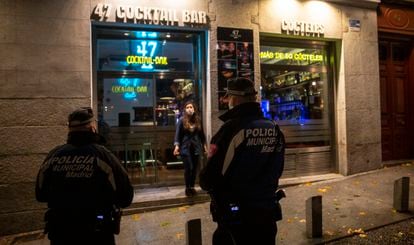
November. The vaccine arrives
In the fight against the second wave, which was seeing the number of infections and fatalities rise, there was some light at the end of the tunnel On November 16, Moderna announced that its coronavirus vaccine was 95% effective. Two days later, Pfizer did the same. And a week after that, Oxford-AstraZeneca confirmed its vaccine worked, albeit with a lower rate of success. It would be a question of weeks before regulatory bodies would give the green light to the vaccination program, which would start to take the world out of the nightmare that began in January.
/cloudfront-eu-central-1.images.arcpublishing.com/prisa/2ECXFNGCCRCJ7B5BEZLE44GJWY.JPG)
December. A different Christmas and the first vaccinations
The process to approve the vaccines went quicker than anyone had imagined. In the first half of December, the immunizations began in some countries, such as the United Kingdom and the United States. But with the solution already underway, there were still some problems to be solved. The second wave was still threatening most of Europe, including Spain, and the critical Christmas holidays were approaching. These would provide the virus with its preferred ecosystem: social meetings, dinners in enclosed spaces and high mobility. To avoid a winter as complicated as the previous spring, governments got to work to come up with plans that would allow families to see one another, but with the biggest limits possible on such encounters.
Spain approved a general framework that could be modified by each region. Mobility was permitted to see family members and allegados, a term that caused considerable confusion. The curfew would be pushed back on the major dates of the holiday season and the number of people permitted to meet would be raised. But the virus continued to spread and many regions backtracked on the relaxation of measures. The consensus among experts was that after these dates the number of cases would rise. But few went as far as to predict by how much, in particular in the light of the discovery of a new, more infections strain of the virus in the United Kingdom.
The virus has spent the year surprising us. Everyone’s hopes are now on 2021, but there is still a way to go yet for the pandemic, and the next chapters are far from written.
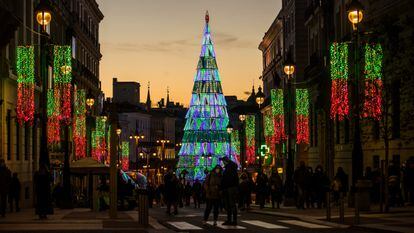
/cloudfront-eu-central-1.images.arcpublishing.com/prisa/KEUVML7KWRFPHRM2XBG3IBFKZE.jpg)
/cloudfront-eu-central-1.images.arcpublishing.com/prisa/LNLNTMI4LZAJ7B6POBUPURV2NI.jpg)










































